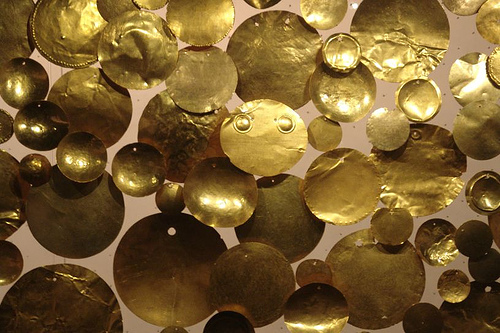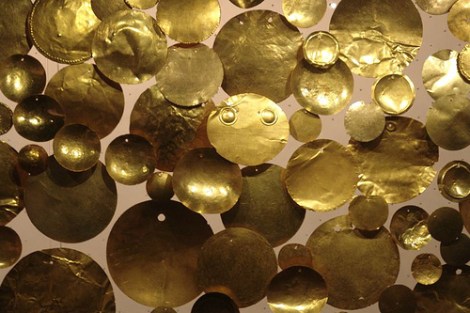Gold mining today is far from the charming, if soggy, practice of standing in a river and trying to sift out gold nuggets. Today, miners sift out gold from a river of cyanide, basically: They mine rock with tiny concentrations of gold in it, crush it up, and use cyanide to pull the gold molecules out. This is terrible for the environment, as you might imagine. Mother Jones pulled these statistics together a few years ago:
Mining gold to create a single 1/3-ounce 18-karat ring produces at least 20 tons of waste and 13 pounds of toxic emissions.
Those emissions contain 5.5 pounds of lead, 3 pounds of arsenic, almost 2 ounces of mercury, and 1 ounce of cyanide.
But now scientists think they’ve come up with a way of extracting gold using a compound much more benign than cyanide. Instead, they think they can use cornstarch.
During a bit of esoteric chemistry research, a group of scientists who were trying to make cubes out of molecules of gold and starch found that instead they kept making needles. Each needle was made of thousands of nanowires, Popular Science reports, and each nanowire had a string of gold atoms inside.
In other words, they found accidentally that they were able to isolate gold from all the other stuff around it. Now they’re working on developing this into a cheap way to extract gold commercially. It won’t solve all of gold mining’s problems, but any time you can switch out cornstarch for cyanide in an industrial process, you’re doing well.




